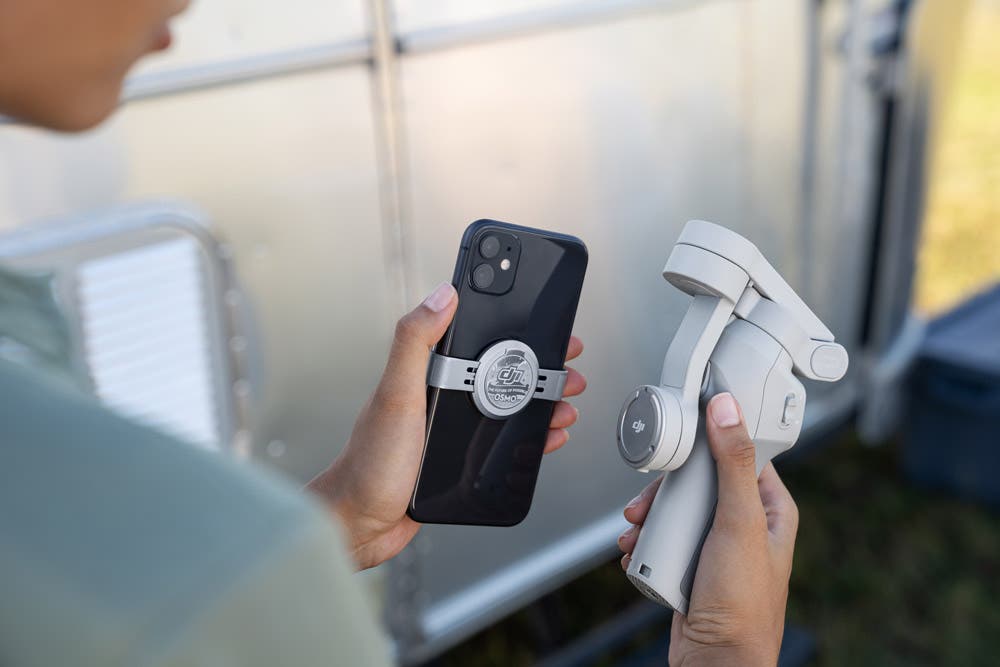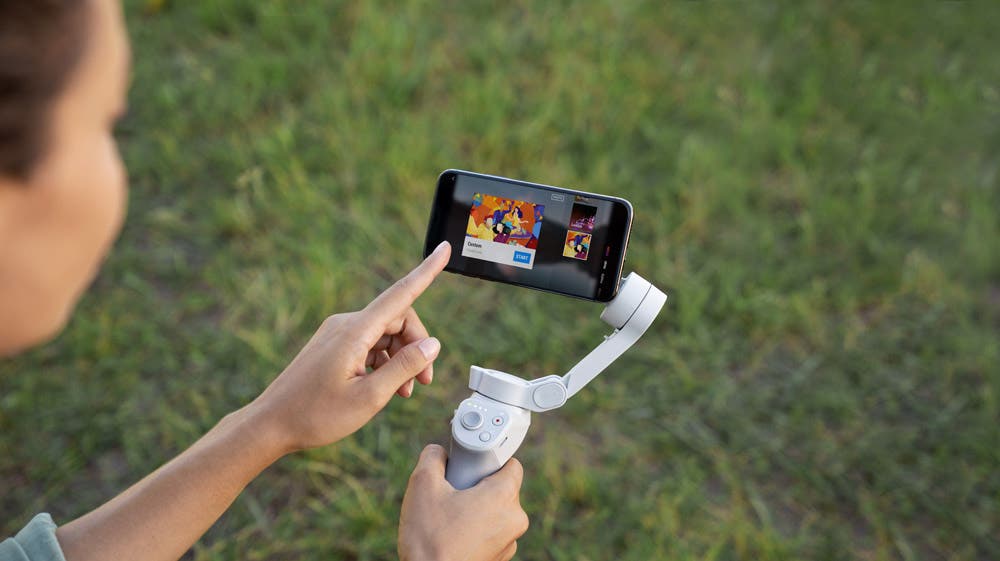DJI Goggles Racing Edition
Sold Out

We offer FREE Australia wide express delivery. 1-3 business days.
Got a question? Chat now.
Inheriting all the functions and dual 1080p HD screens from the original DJI Goggles, DJI Goggles RE support Sphere pano viewing and local video playback, offering an upgraded FPV experience.
NOTE:
A DJI Goggles - Micro USB OTG Cable is required when working with Spark.
A DJI Goggles - HDMI (Type A) Female to HDMI (Type C) Male Adaptor is required when working with Inspire 1 series.
OVERVIEW











IIN THE BOX

FAQs
DJI GOGGLES RACING EDITION
Are DJI Goggles RE compatible with the Mavic 2?
Yes. Please first activate DJI Goggles RE and update the firmware to version 01.00.0600 or above on your computer using the appropriate version of DJI Assistant 2. Power on DJI Goggles RE, choose Linking in Settings, then choose Mavic 2. Press the link button on the Mavic 2 and wait for a few seconds to connect DJI Goggles RE to the aircraft.
* To download the version of DJI Assistant 2 that is compatible with DJI Goggles RE, please visit: https://www.dji.com/dji-goggles-re/info#downloads.
What are the main differences between DJI Goggles Racing Edition (RE) and DJI Goggles?
1. In addition to the 2.4GHz digital transmission band, the new DJI Goggles RE also supports the 5.8GHz band, which can avoid the usual interference on the more crowded 2.4GHz.
2. DJI Goggles RE has redesigned the internal linear polarized omnidirectional antennas and added new external Pagoda antenna, a 5.8GHz single-frequency omnidirectional left hand circularly polarized (LHCP) antenna.
3. DJI Goggles RE has restructured the radio communication strategy and video decoding algorithm to lower transmission latency to 50 ms* (with wireless transmission latency of less than 10 ms), ensuring smooth and reliable video transmission and avoiding video lag and disconnection from the digital video transmission system when operating in a normal environment.
4. DJI Goggles RE supports analog transmission at any integer frequency between 5.650~5.925 GHz and analog video storage on a Micro SD card.
5. DJI Goggles RE can store digital video on a Micro SD card.
6. DJI Goggles RE supports local video playback and Sphere pano viewing, allowing users to turn their head to get a 360° view of the Sphere pano.
7. The facial pad has been redesigned and the headband has used new replaceable leather materials to make it even more comfortable to wear.
*When tested with a 480p video feed.
How long is transmission system latency on DJI Goggles RE?
1. Latency of the transmission system (end to end ) comes from latency in the camera, coding, wireless transmission, Vsync, display, and screen response.
2. According to testing results, a transmission system with the lowest latency has a latency ranging from 30-50 ms, while the latency of an ordinary transmission system ranges from 50-80 ms.
3. The Ocusync transmission system latency range is 50-70 ms, tested in an environment without interference and with a 480p 50fps video feed, with coding latency measured at approx. 5 ms and wireless transmission latency measured at <10 ms.
How many analog transmission frequency channels do DJI Goggles RE support?
DJI Goggles RE supports the 5.8GHz FPV Band A/B/E/F/C (Raceband), up to 40 channels in total. It also receives up to of 275 integer frequencies between 5650~5925 MHz, in which Band C (Raceband) includes 8 channels and the channel interval is 27 MHz. It is recommended to choose Band C when flying multiple aircraft simultaneously.
Which DJI drones are compatible with DJI Goggles RE?
DJI Goggles RE work with all the DJI drones compatible with the original DJI Goggles, including the Spark, Mavic Pro, Phantom 4 Series, and Inspire 2.
What's the SMA port on the body of the Goggles RE for?
In addition to the four antennas built into the original DJI Goggles, DJI Goggles RE are also compatible with external antennas, which work with the built-in ones to support 5.8 GHz video transmission. The external antennas connect to the SMA port on the Goggles' body.
What video formats do DJI Goggles RE support?
MP4, MOV, MKV
Do DJI Goggles RE support any third-party flight controllers or remote controllers?
Yes. Supported flight controllers: KISS, F3, F4, and Naze Supported remote controllers: X9D (FrSky), DEVO 10 (Walkera), T8FG (Futaba), T14SG (Futaba), WTF09sll (WFLY), and AT9S (RadioLink)
How can I view Sphere pano photos with DJI Goggles RE?
1. Sphere panos on SkyPixel can be downloaded to an SD card and viewed with Goggles in the Local Storage interface.
2. If Sphere panos are saved to a DJI aircraft, you can download the photos to Goggles RE from Aircraft Storage then view them in the Local Storage interface.
DJI OCUSYNC AIR UNIT
What is the SD card slot for?
Videos recorded by the DJI OcuSync Air Unit will be stored on the SD card inserted into the Air Unit's SD card slot. Videos rendered from the live view will also save to the Goggles' SD card slot. Please note that these SD slots do not support hot swapping.
Can I connect the Air Unit with any non-DJI camera?
No.
Does the OcuSync Air System support non-DJI antennas?
Yes. However, we strongly recommend you do not use non-DJI antennas as compatibility problems may arise.
What batteries does the Air Unit support?
3S or 4S batteries.
How do I update the video transmission module of the Air Unit?
Connect the video transmission module to a PC with a USB cable. Open DJI Assistant 2 and choose the firmware version you need. Proceed with the firmware update.
Can I remove the metal shell from the video transmission module to reduce weight?
No. The metal shell is used for cooling and fixing the device. It should not be removed.
How many frequency channels does the DJI OcuSync Air Unit support?
1. Under Auto mode, the DJI OcuSync Air Unit automatically chooses a frequency among 105 channels available in the 5.8GHz frequency band and 63 channels available in the 2.4GHz frequency band.
2. Under Manual mode, the DJI OcuSync Air Unit supports 12 5.8GHz channels and 7 2.4GHz channels. Compared to analog video transmission, these frequency channels were designed to have lower interference between adjacent channels. Where simultaneously working analog video transmission systems can cause severe interference, the OcuSync Air Unit supports up to 19 simultaneously working systems.
DJI OCUSYNC CAMERA
Can I connect the camera to other devices other than the DJI OcuSync Air Unit?
No.
Can I use the camera of the OcuSync Air Unit to take photos?
No. But you can take screenshot by pressing the touch pad on the Goggles RE with two fingers and hold.
DJI OCUSYNC ANTENNA
What are the differences between the three compatible antennas?
DJI Goggles RE come with a set of three compatible antennas for different scenarios:
• Pagoda: This circularly polarized antenna performs best at 5.8 GHz.
• Cylindrical: Also circularly polarized, this antenna operates at 2.4 and 5.8 GHz for fully integrated performance.
• Dipole: Linearly polarized, this antenna operates at 2.4 and 5.8 GHz and is lightweight, allowing for a clear video feed at close distances.
Can I bend two antennas to make them cross each other?
No. Bending the antennas may permanently affect their service life and performance.
Can I remove the silicone cover from a Dipole antenna?
It is recommended you do not remove the silicone cover.
When using Goggles RE to receive analog video transmission, can I use antennas other than the official DJI Pagoda Antenna?
No. In many countries, local laws and regulations do not allow unofficial antennas to be used.
NOTE:
[1] Attainable when transmission resolution is set to 480p under FCC regulations at 2.4 GHz in ideal conditions. The recommended transmission distance is 2 km for fixed-wing aircraft and 200 m for drone racing.
[2] Camera Module and OcuSync Video Transmission Module sold separately.
[3] 720p 60 fps and 480p 50 fps transmission are also supported.
[4] 12 selectable transmission channels are available at 5.8 GHz and seven channels are available at 2.4 GHz.
[5] Supported with both OcuSync and analog video transmission.
[6] OcuSync Video Transmission Module and Camera Module are required.
Related Items
DJI RSC 2 Pro Combo
Sold Out $999.00
- Combo Kit
- Foldable Design
- 3.0KG tested payload
Overview
Professional-level results are effortless with DJI RSC 2. This compact stabilizer for mirrorless and DSLR cameras features a foldable design and intuitive features, empowering filmmakers, one-man crews, and content creators everywhere.
Foldable, Compact, Amazing
DJI RSC 2’s foldable design means easy transportation and storage, along with expanded shooting options. Get creative with RSC 2’s six configurations, delivering versatility that simplifies even the most complex shots. When folded, RSC 2 is just 7 × 7.5 inches, making it as portable as it is powerful.
Titan: DJI Stabilization Evolved
No one makes camera stabilizers like DJI. Our Titan Stabilization Algorithm captures smoother footage than ever. Need more? SuperSmooth mode compensates for micromovements and increases torque, stabilizing even 100mm zoom lenses. [1]
Feel the Focus
The Front Dial offers precise focusing in any scenario and single-handed operation.
Dual-Layer Camera Mounting Plate (Manfrotto + Arca)
The Manfrotto + Arca dual-layer camera mounting plate is compatible with popular brands. [2] Switch to portrait mode with just a tap to bring professional-grade footage to your social media content.
RavenEye Image Transmission System
RavenEye transmits video while giving you remote control of camera parameters.
Performance
Transmit 1080p video, adjust gimbal parameters, and even change camera settings from 200 m away with a latency of just 60 ms. [3]
ActiveTrack 3.0
With ActiveTrack 3.0 built in, DJI RSC 2 uses the source signal from the camera to track your subject. [4]
Force Mobile
RavenEye enhances Force Mobile, increasing responsiveness and decreasing latency.
Dual Handle
Get maximum control for shots that demand it.
Hand Grip
Use as a tripod and also as a grip extension.
NATO
Can be used for a briefcase handle and various other accessories.
1/4-20" with ARRI Positioning Holes
Provides more possibilities when using RSC 2 in a folded configuration.
Built-In OLED Screen
A 1-inch built-in OLED screen gives you complete control, right at your fingertips.
Battery
Charge less and shoot longer thanks to RSC 2’s advanced battery, which provides a 14-hour runtime and supports fast charging. [5]
Timelapse
Capture the passage of time with a steady frame.
Roll 360
Spin your camera for a rolling shot.
Panorama
With a steady pan from the gimbal, create gigapixel panoramas from your camera.
Key Features
1.2kg Weight / 3kg Tested Payload
1" OLED Screen
Max 14hr Fast-Charge Batteries
Quick Switch to Vertical Shooting
Titan Stabilization Algorithm
Compatible with DSLR and Mirrorless cameras
Foldable Design
1. SuperSmooth is effective for lenses of up to 100mm equivalent focal length.
2. It is recommended to use the Ronin Quick-Release Plates whenever mounting cameras on DJI RSC 2. Secure and damage-free mounting of third-party quick-release plates is not guaranteed.
3. Tested in a closed environment in favorable conditions and an unobstructed wireless signal using the FCC and SRRC standard (CE standard max is 100 m). Actual results may vary.
4. The RavenEye Image Transmission System is required for ActiveTrack 3.0 to be used.
5. DJI RSC 2 is compatible with the PD and QC 2.0 charging protocols. It is
recommended to use 18W chargers with these protocols for optimal charging.
6. Carrying Case comes with the DJI RSC 2 Pro Combo.
DJI FPV Experience Combo
Sold Out $1,299.00
DJI FPV Goggles
Sold Out $829.00
OVERVIEW
High definition, low latency, strong immersion, long-distance transmission, and strong anti-interference.
Power cable × 1
Antenna × 4
Headband × 1
USB-C cable × 1
Bundle pocket × 1
Dimensions:
202 × 126 × 110 mm (antennas included)
184 × 122 × 110 mm (antennas excluded)
Screen Size: 2-inch × 2
Screen Resolution (Single Screen) : 1440 × 810
Screen Renew Rate: 120 Hz
Communication Frequency: 5.725-5.850 GHz
Transmitter Power (EIRP) : FCC/MIC: <30 dBm; CE: <14 dBm; SRRC: <19 dBm
Live View Mode
Low Latency Mode (720p/120fps)
High-Quality Mode (720p/60fps)
Video Format: MP4 (Video format: H.264)
Supported Video Play Format: MP4, MOV, MKV (Video format: H.264; Audio format: AAC-LC, AAC-HE, AC-3, MP3)
Operating Temperature: 32° to 104° F (0° to 40° C)
Power Input: 7.4-17.6 V
FOV Adjustable from 30° to 54°. Adjustable image size from 50%-100%
Interpupillary Distance Range: 58 -70 mm
Battery: 6.6V-21.75V
External battery, total power consumption of 7W
Supported Storage Card: microSD cards with capacities of up to 128GB
DJI FPV Remote Controller
DJI Osmo Mobile 4
Sold Out $239.00
- Magnetic Design
- Portable and Foldable
- CloneMe Pano
- Gesture Control
- ActiveTrack 3.0
- DynamicZoom
Speed, creativity, portability, and stabilization were DJI’s priorities when crafting the new OM 4. This feature-packed stabilizer has a powerful motor that curbs shake, even with an external lens. You can control the camera, adjust zoom speed, and switch between photo and video from the handle. To take your filmmaking even further, try one of the gimbal’s built-in movement features, including ActiveTrack 3.0, hyperlapse, timelapse, motionlapse, panorama, sport mode, and more. Vloggers will also appreciate the OM 4’s gesture controls. These give filmmakers the power to start and stop recording, entirely hands-free.
Key Features:
- Detachable magnetic phone clamp and ring holder
- 3-axis stabilization
- Pitch-arm design offers more accessory attachment options
- Phone clamp sensor indicates when phone is in place
- Foldable design with ergonomic handle at 15 degrees
- Handheld design offers camera controls like trigger, shutter, photo-and-video alternating, and zoom slider
- Robust app movements and features range from motionlapse and timelapse to gesture control and sport mode
- Supports shutter control after Bluetooth connection
- Works with most smartphone cameras


Magnetic design for speedy attachment and release
Say goodbye to the days of frustrating gimbal balancing and the correlated missed shots. With the DJI OM 4’s lightweight magnetic phone clamp and ring holder, you can quickly and safely attach or remove your smartphone and film the action as it happens. The phone clamp and ring holder are also detachable, so you can fold this gimbal into a compact and portable size when it’s time to jet.
Creative freedom with film movements and styles
The OM 4’s creative movement and recording features will take your footage up a notch instantly. Try ActiveTrack 3.0 while following trackable subjects like adults, kids, and even pets. Or, experiment with DynamicZoom, a dolly zoom feature that gives new and seasoned filmmakers the chance to capture high-end cinematic shots. If it’s time to step into frame, the OM 4’s gesture controls — which start or stop recording and control composition — will become your new best friend. Additional features like panorama, timelapse, motionlapse, glamour effects, sport mode, and more are also at your fingertips.


Ergonomic handheld design provides utmost control
Perfect for long days in the field, the OM 4 comes with a new, 15-degree ergonomic handle design that makes holding the gimbal more comfortable. You can also control everything from the shutter to ActiveTrack from the handle. Your stabilizer can shoot more seamlessly than ever.
View full product details












































